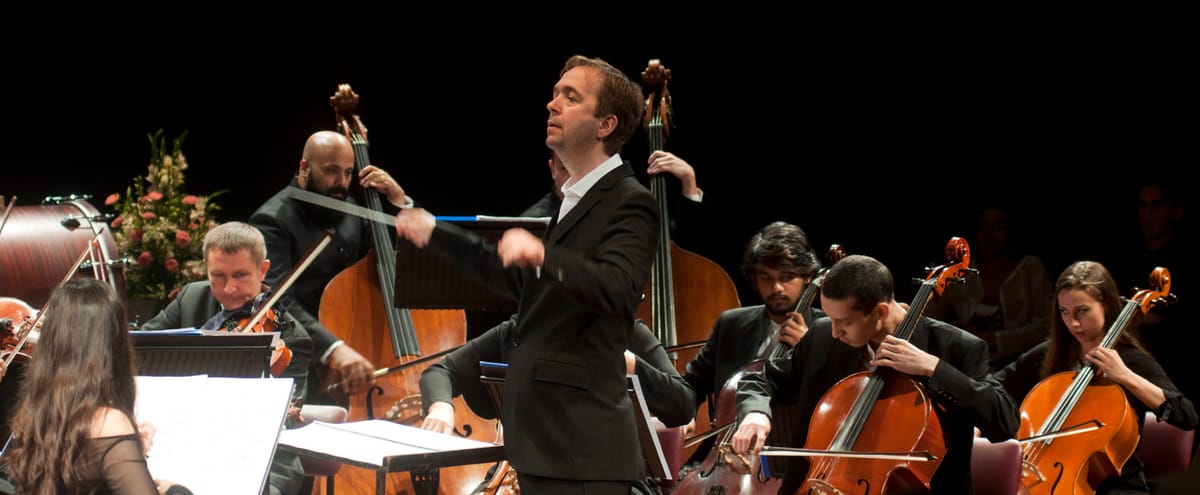How Not to Pickle Composers

The Resident Conductor of the Symphony Orchestra of India, Mikel Toms, takes a moment out of rehearsals to consider the point of it all, as he asks and answers an important question: why do we rehearse at all?
For years, I have been fascinated by the etymology of the word “rehearse”. Not so fascinated, I concede, that I have ever looked it up but, all the same, I do think about it from time to time when eating celery. To rehearse. To re-hearse. To hearse again. To place someone in a burial cart not for the first time, which begs the question, “Why wasn’t the first rehearsal enough to finish the blighter off?” In short, in the word “rehearse”, we learn the most important thing to avoid in rehearsal: bringing out your dead. Again.
It’s a sort of Janus word, an auto-antonym, if you like. A word that is its own opposite – like “despite bolting the horse in the stable, the horse bolted and no horse was left, for the horse had left.” That sort of thing.
“What in blazes is your point?”, I hear you ask, not unreasonably. My point is that when we are rehearsing music that was first performed, let us say, 200 years ago, we have to remember that it is still new music. Nobody writes music that needs to be aged in oak barrels for a couple of decades in order for it to acquire a fruity, citrus nose. It already sounds the way it should on the day it is first performed. If, a couple of centuries later, our audience hears a lovely, old piece of music, tinted rosily through a hundred years of recordings, a kindly, affable cove toasting its quavers by the fireside, we have failed. The point of rehearsal is to make audiences feel they are witnessing a birth with all its concomitant squeals of agony and delight; not to make them feel they are trudging past the pickled corpse of Lenin.
The paradox of rehearsing is that even as we familiarise ourselves with every last detail of a piece of music, the wider aim is to find a way of performing as though we are hearing the story for the first time ourselves. We learn the music and, at the same time, we unlearn all the previous times we have played it. Mozart, for example, is often presented as a precious stone whose sharp edges have been rounded off by centuries of sloshing about in a sea of cotton wool. This needs to be unlearned; we like the sharp edges. Generally, his music is either loud (forte) or soft (piano) and by making it much more nuanced than this, we lose the vitality of the conversational exchanges or the robustness of its architecture. The opening of Beethoven’s Fifth Symphony is, as generations of curmudgeons would have us believe, a dire and weighty portent of fate but he asks for it to be played Allegro con brio (fast and bright) and this makes so much more sense.
The most important tool we bring to rehearsals, I find, is a giant (albeit thankfully metaphorical) cobweb brush and if anyone hears our performance and then decides to mount their own concert of the same music, we fully expect (nay, welcome!) a jolly stiff brushing of our own. The last thing we need from dead composers is dead music.
Incidentally, for those of you who, in the time it has taken to read this article, have actually gone to the trouble of finding out that “rehearse” derives from the Middle English word for “repeat aloud”, I plead alternative facts. I’m sticking to my story.
This piece was originally published by the National Centre for the Performing Arts, Mumbai, in the April 2020 issue of ON Stage – their monthly arts magazine.





